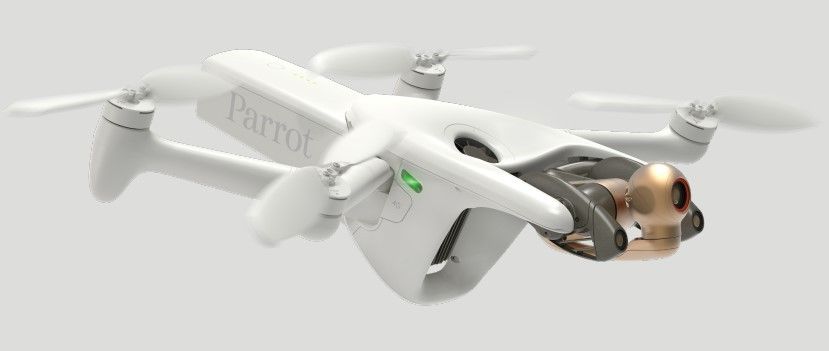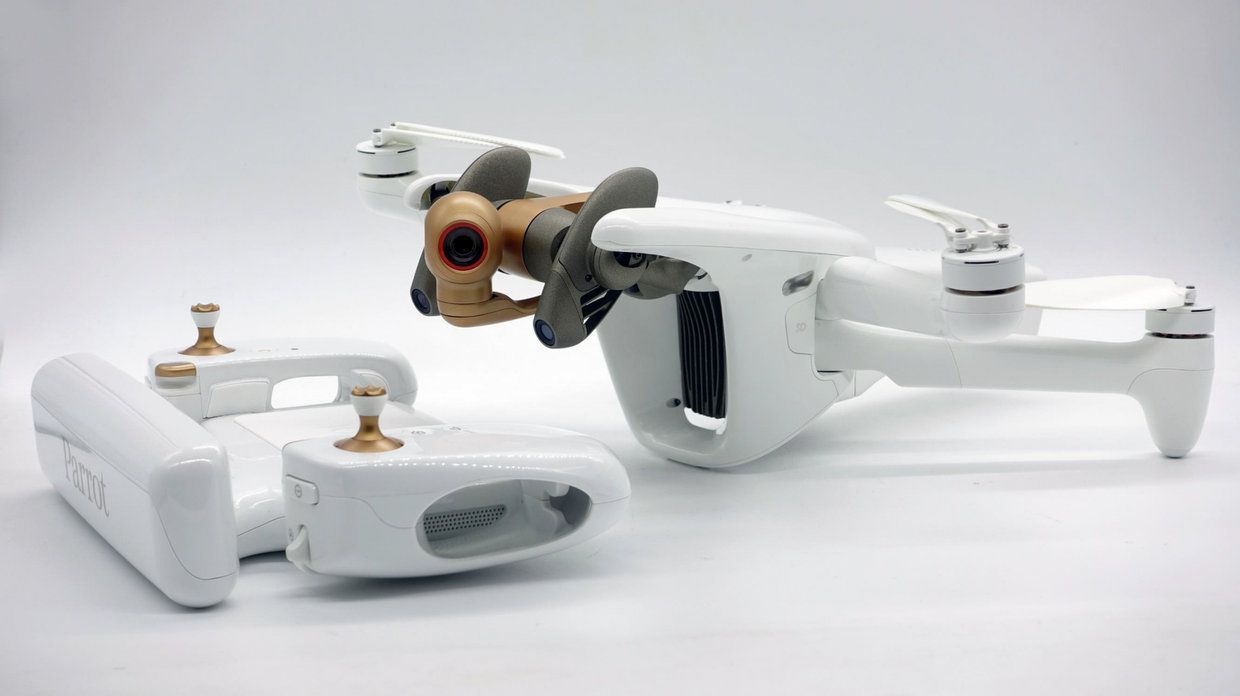
Parrot Announces A Bug-Inspired 4G Drone
The ANAFI Ai is designed for professionals and has (almost) unlimited communications range
Parrot released the Anafi drone almost exactly four years ago. I’m still a fan of the little consumer drone—the design is elegant, it’s exceptionally portable, the camera is great, and it’s easy to fly. But the biggest problem with the Anafi (especially four years later) is that it’s very much not the cleverest of drones, without any of the onboard obstacle avoidance that’s now become the standard. Today, Parrot is announcing the Anafi AI, a butt-forward redesign of the Anafi for pros that adds obstacle avoidance, an enormous camera, and 4G connectivity that allows the drone to be flown to anywhere (and behind any object) where you can get a reliable 4G signal.
While the design of the Anafi AI is somewhat reminiscent of the earlier Anafi (probably because Parrot says that both designs were inspired by insects), it’s totally different looking once you get past the battery. The drone’s “head” is built around what looks to be a massive heat sink (with a dedicated fan on the top), along with a completely new camera system up front. The main camera (in the middle) is on a three axis gimbal with both mechanical and electronic stabilization, and features a 48 megapixel sensor that can shoot 4K video at 60 FPS.
On each side of the main camera are the obstacle avoidance cameras. The press release says that the obstacle avoidance system “detects obstacles in all directions,” and it apparently does so with those those two cameras thanks to the ability to rotate them an astonishing 311 degrees independently of the main camera. The idea is that if you’re flying up, down, or backwards, the stereo system will be able to swivel around to provide obstacle avoidance in that direction. Not all directions, mind you, and not all at the same time, but it’s an innovative way to do it that reduces mass, cost, and computational overhead.

The Anafi AI’s most unique feature is its 4G connectivity (with your own SIM card). From the press release:
With 4G, the data link between the drone and the pilot becomes robust in all circumstances. Already widely and reliably deployed around the world, 4G offers long range transmission at low frequency bands at 700MHz-900MHz. Additionally, the 4G connection means professionals can operate the drone at any distance.
Based on my experience with 4G here in the United States, I’d certainly take issue with that “robust in all circumstances.” There are plenty of places where 4G sucks, or doesn’t exist at all. Fortunately, the 4G link is optional, not a requirement, and you can still connect to the drone directly via your phone and the radio in the controller. Switching between the controller’s radio and 4G is seamless. And with the controller as a fallback option, I can certainly understand the (potential) advantages of 4G, although it’s important to note that flying a drone beyond line of sight is generally not allowed by the FAA here in the United States. We asked Parrot CEO Henri Seydoux about this, because it seems like a significant limitation on one of the Anafi AI’s most distinguishing features:
We believe in flying out of line of sight, we believe it’s important, and we believe that 4G is the safest radio that you can have for this. There is an aim by many countries to authorize the flight of drones out of the line of sight. The regulation is coming step by step, country by country. And we believe that this is the future of the drone.
I absolutely agree with Seydoux, but there are a lot of steps to be taken, and governments make sure those steps are as small and taken as slowly as possible. For now, it’s hard to know how valuable this 4G feature will be. Otherwise, we’re looking at a 900-gram drone with a maximum flight time of 32 minutes. Top speed is 16 meters per second. The autonomy is fairly standard, although the autonomous “survey grade” photogrammetry functionality looks like it could be great. [READ MORE]




Comments :